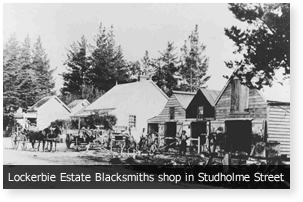|
Kinleith Branch
The Kinleith Branch railway line is located in the Waikato region of New Zealand. The line was constructed by the Thames Valley and Rotorua Railway Company, Taupo Totara Timber Company and rebuilt by the Public Works Department primarily to serve the Kinleith Mill in 1952. It is in length. History The New Zealand Government Railways line to Thames was opened to Morrinsville on 1 October 1884. Taking advantage of enabling legislation, the Thames Valley and Rotorua Railway Company originally built the line from Morrinsville as part of its planned route to Rotorua as far as Lichfield. The Morrinsville-Oxford section opened without any ceremony on 8 March 1886. NZGR took over the company on 8 March 1886, instead building the Rotorua Branch railway line from Putāruru. The section between Putāruru and Lichfield was closed by NZGR in 1897 as it served no purpose. The Taupo Totara Timber Company (TTT Company) then used the disused railway formation from Putāruru for its lightly co ... [...More Info...] [...Related Items...] OR: [Wikipedia] [Google] [Baidu] |
Morrinsville
Morrinsville is a provincial town in the Waikato region of New Zealand's North Island, with an estimated population of as of The town is located at the northern base of the Pakaroa Range, and on the south-western fringe of the Hauraki Plains. Morrinsville is around 33 kilometres east of Hamilton and 22 kilometres west of Te Aroha. The town is bordered by the Piako River to the east and the Waitakaruru Stream to the south. History and Culture Pre-European settlement Prior to European settlement of New Zealand, the hills around present-day Morrinsville were occupied by the Ngati Werewere Māori people of the Ngati Haua Iwi, and the site of the present-day town was on or near to an old Māori route between the upper Waihou-Piako basin and the Ngāruawāhia area. Following European settlement, some early European traders are believed to have traversed this route prior to 1834 when the Rev. J. Morgan travelled up the Piako River to near the future town site and crossed west ... [...More Info...] [...Related Items...] OR: [Wikipedia] [Google] [Baidu] |

